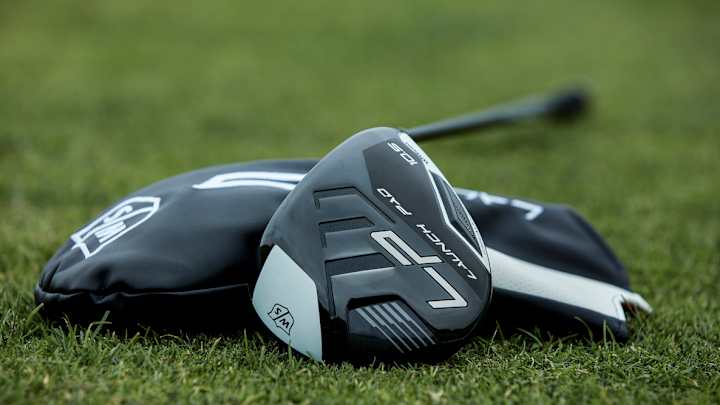Wilson Golf unveils Launch Pad lineup of stealthy slice killers

From the moment that golf equipment manufacturers first hitched their proverbial wagons to PGA Tour professionals, a chasm was formed that separated the average recreational player from the design and engineering advancements at the core of the majority of those manufacturers’ drivers and fairway woods.
One of the two dreaded "s" words in golf — the one that rhymes with “dice” — is a common affliction for many casual players, but it rarely defines the shot that a Tour player might hit. In fact, many pros would prefer a driver that promotes a slight fade.
“It does affect better players,” Jon Pergande, the global innovation manager at Wilson Golf says of the slice, “but it’s not an inherent problem for better players. It just creeps up from time to time.”
Historically, golfers whose swings are defined by that all-too-common, over-the-top transition have been relegated to one of three scenarios. They could simply accept the natural flaws in their swings and compensate accordingly. They could funnel copious of amounts of time and money into lessons to (hopefully) correct the problem. Or they could buy clubs designed to promote a draw. The third option, although attractive in theory, has had plenty of flaws of its own over the years.
Until recently, the market for drivers constructed with a draw bias was comprised only of clubs characterized by an extremely offset design. As Pergande explains, that construction, although effective in execution, was ineffective from a golfer’s psychological standpoint.
“The hosel gets so far in front of the face that it [the club] looks awkward,” he says, “and the look to the player at address is most important. A player needs to feel confident that he or she can put their swing on the ball and deliver the club straight at impact.”
Across Wilson Staff’s new Launch Pad lineup of drivers ($299.99) and fairway woods ($199.99), the Chicago-based company has overcome those limitations through a bevy of features, some of which are visible and others that are not.
In terms of what’s hidden from view, much of the club’s weight is positioned forward and low — under the neutral axis — to minimize spin. Additionally, 13 grams of weight have been positioned near the heel of the club, which prevents the club face from lagging behind during the swing and staying open at the point of impact.
“What that allows the club head to do,” Pergande explains, “is to close faster during the swing.”
Those internal design features allowed Wilson’s team of engineers to create a club that is built around an upright lie angle, which naturally closes the face of the club. The driver and fairway woods also incorporate the least amount of hosel offset.
“It’s a clean, traditional-looking head that looks more comfortable at address for having a slightly closed face,” Pergande says.
Golf purists might argue the need for clubs like these, branding them as Band-Aids, rather than permanent cures to poor technique. Pergande knows better.
“It comes down to who the consumer is,” he says. “I don’t teach a swing; I build products to help you have a better experience in this game. Not everybody who plays the game of golf has access to teaching professionals to help them improve their swing or change their swing. There are people who just enjoy the game of golf, and this product is one that is built to help them overcome a common swing flaw that many people have.”
In fact, as Pergande explains, the effectiveness of its Launch Pad lineup gradually corrects the first swing flaw that perpetuates the slice. “The first time players hit it,” he says of the driver, “they’re impressed by it. Then players start to aim straighter and straighter and straighter because of those results. It creates a confidence loop.”
Does that mean golfers who struggle with a slice will eventually outgrow Wilson’s Launch Pad driver and fairway woods?
Pergande won’t make that guarantee, but he recognizes that such an outcome is possible.
“If you get used to this club, the confidence that comes with that is sometimes hard to replace with other clubs,” he says. “But if this allows you to better experience the game with a variety of different clubs, all the better.”
Sign up to receive the Morning Read newsletter, along with Where To Golf Next and The Equipment Insider.

Shaun Tolson is a New England-based writer and journalist. He first took up the game of golf as a kid in the late 1980s, and after graduating from Boston College in 2005, he’s written about the sport for a number of lifestyle publications, including Robb Report, Luxury, Elite Traveler and Private Clubs. Tolson's golf writing has taken him to four continents, where he’s played some of the world’s most revered courses. When not traveling or working out the kinks in his game, Shaun can often be found in the kitchen cooking or concocting a classic cocktail. He’s also a craft beer enthusiast and passionately supports Boston’s professional sports teams.